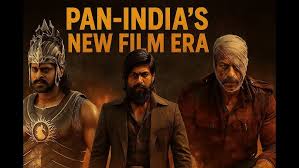A New Chapter in Indian Cinema
For years, Bollywood has been the face of Indian cinema around the world. Vibrant dance numbers, melodrama and predictable narrative arcs are the hallmark of the industry. But beneath the glitz, a nascent movement is quietly reshaping storytelling in Indian cinema. Welcome to India’s Indie Noir movement a gloomy, brooding genre that, drawing from the visual and thematic identity of film noir, merges it with the country’s present-day socio-political consciousness.
This article explores the rise of India’s Indie Noir movement, its key themes, major contributors, and its potential to reshape Indian cinema for a global audience.
What is Indian Indie Noir?
Indian Indie Noir describes a subgenre of Indian independent films with dark stories, morally gray characters, forensic settings, high-contrast visual style and a particularly cynical view of the world. These films are not like commercial Bollywood and are less dramatic, in your face and over the top.
Defining Features of Indie Noir
- Cynical worldview: Characters often operate in morally grey areas.
- Crime and corruption: Central themes often revolve around crime, politics, and societal dysfunction.
- Visual aesthetic: High contrast lighting, shadows, and urban decay.
- Narrative complexity: Non-linear storytelling and ambiguous endings.
Influences
- Western noir classics like Double Indemnity and Chinatown.
- Neo-noir films such as Drive and Prisoners.
- Indian literary and cinematic works such as those by Satyajit Ray and Saadat Hasan Manto.
The Rise of Indie Noir in India
Socio-political Catalyst
The emergence of Indie Noir in India is closely tied to the country’s shifting socio-political landscape. Rapid urbanization, rising crime rates, systemic corruption, and disillusionment with institutions have found their way into cinema as artists attempt to hold a mirror to society.
Streaming Platforms as Enablers
OTT platforms like Netflix, Amazon Prime Video, and SonyLIV have given indie filmmakers the freedom to tell grittier, unconventional stories without the censorship or commercial pressures of mainstream cinema.
Breakthrough Films
- Raman Raghav 2.0 (2016): Anurag Kashyap’s psychological thriller exploring a cat-and-mouse game between a serial killer and a cop.
- Tumbbad (2018): A mythological horror-drama that blends folklore with a stark critique of greed.
- Delhi Crime (2019): Based on true events, this Netflix series unravels a brutal crime through a noir lens.
Key Directors and Creators
Anurag Kashyap
Often hailed as the godfather of Indian indie noir, Kashyap’s films like Black Friday, No Smoking, and Ugly showcase his talent for weaving intricate, dark stories rooted in realism.
Rahi Anil Barve
Director of Tumbbad, Barve brought a fresh blend of horror and noir, grounded in Indian mythology.
Richie Mehta
Known for Delhi Crime, Mehta’s work is marked by an investigative tone, subdued aesthetics, and strong character arcs.
Neeraj Ghaywan
With films like Masaan, Ghaywan explores themes of grief, societal pressure, and moral ambiguity.
Cultural Relevance and Audience Reception
Indie noir has gained a strong cult following, particularly among urban millennials and cinephiles seeking substance over style. These films often screen at international festivals and receive critical acclaim, even if they don’t always perform well at the box office.
Resonating Themes
- Alienation in urban settings
- Fragility of justice systems
- Gender and caste-based violence
- Psychological trauma
Challenges Facing the Movement
Limited Funding
Indie noir films often struggle with low budgets, making it difficult to achieve high production value.
Niche Audience
While critically acclaimed, these films still cater to a niche audience, limiting commercial viability.
Censorship and Sensitivity
Sensitive topics such as religion, sexuality, and corruption often lead to pushback from authorities and conservative groups.
The Future of Indian Indie Noir
As India’s digital infrastructure grows and global audiences become more open to foreign-language content, the future of Indian Indie Noir looks promising. Upcoming filmmakers are increasingly experimenting with form, style, and narrative to push the boundaries of storytelling.
There is also a noticeable shift in the perception of what “Indian cinema” means globally. With films like Gangs of Wasseypur and The Lunchbox garnering international attention, there’s room for more dark, introspective stories to find a place on the world stage.
Beyond Bollywood Lies the Real India
India’s fledgling Indie Noir movement is a refreshing digression from tired old Bollywood cliches. It speaks to a collective psyche of a culture in flux and to stories that are raw, real and resonant. And if this genre continues to develop, it could not only further diversify Indian cinema but also shift global perceptions of what Indian storytelling might look like.
For those seeking more than just escapism, Indian Indie Noir offers a hauntingly beautiful, thought-provoking cinematic experience that goes far beyond the bright lights of Bollywood.
FAQ: India’s Indie Noir Movement
Q1: What is the difference between Bollywood and Indie Noir?
A: Bollywood refers to mainstream Indian cinema, often characterized by song-and-dance routines and melodrama. Indie Noir focuses on darker, more realistic themes, often produced independently and not reliant on commercial formulas.
Q2: Are Indian Indie Noir films available internationally?
A: Yes. Many Indie Noir films are available on international streaming platforms like Netflix, Amazon Prime, and MUBI.
Q3: Is Indie Noir only limited to crime and thriller genres?
A: While crime and thrillers dominate, Indie Noir also explores psychological drama, socio-political commentary, and even mythological horror.
Q4: Can new filmmakers enter the Indie Noir space?
A: Absolutely. The democratization of filmmaking tools and the rise of OTT platforms have made it easier for new voices to break into this genre.
Q5: What are some must-watch Indian Indie Noir titles?
A: Raman Raghav 2.0, Tumbbad, Delhi Crime, Masaan, and Gangs of Wasseypur are excellent starting points.